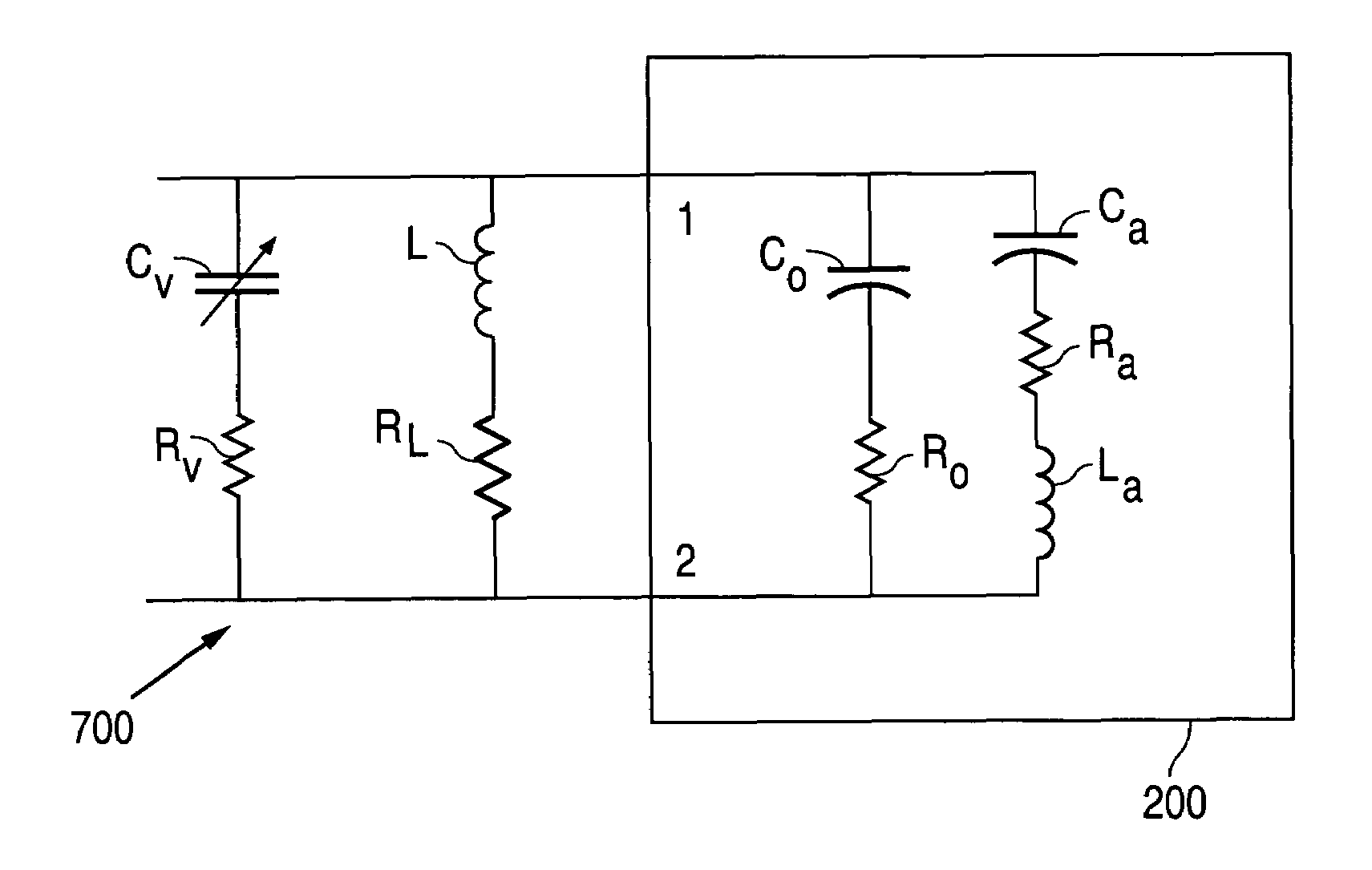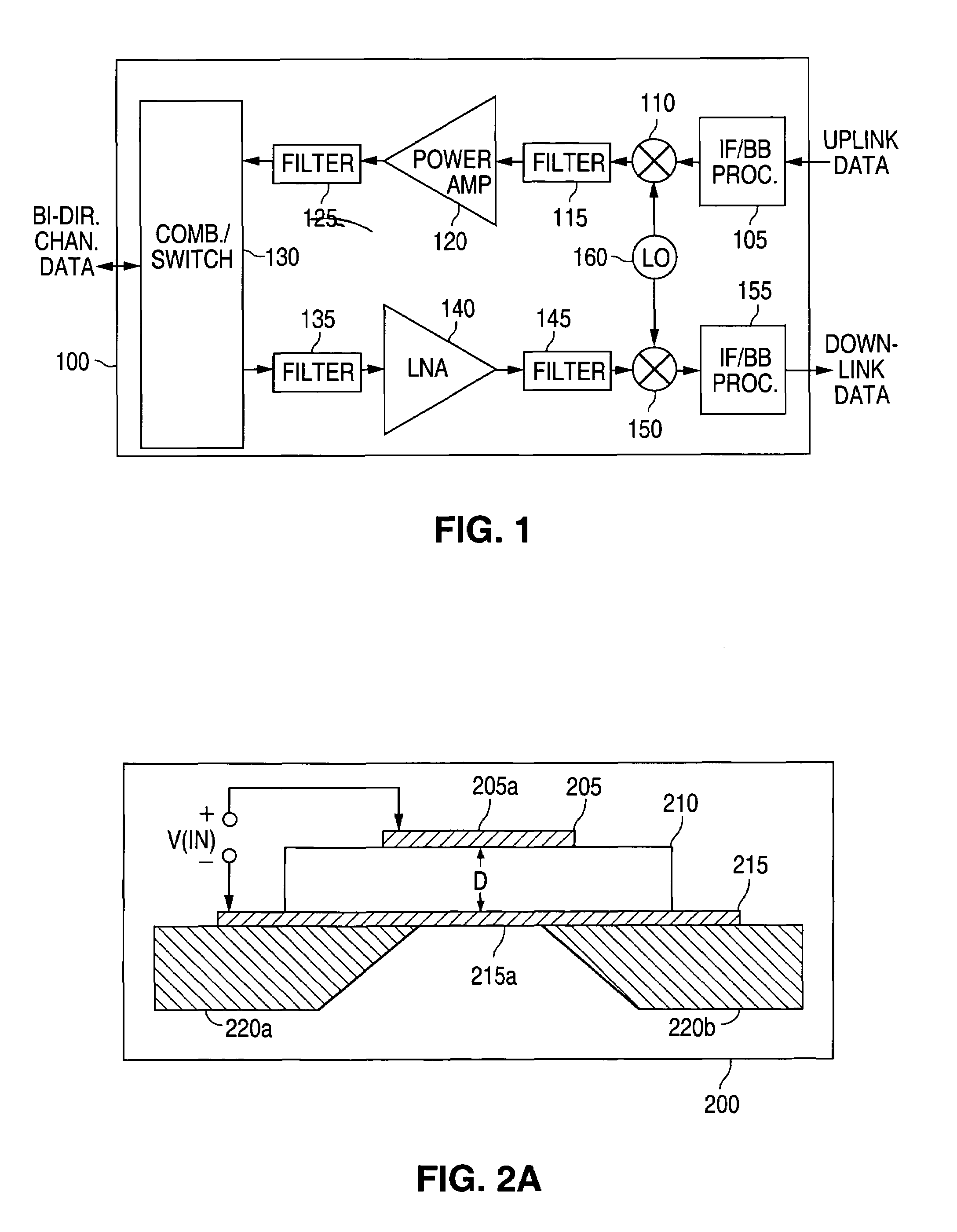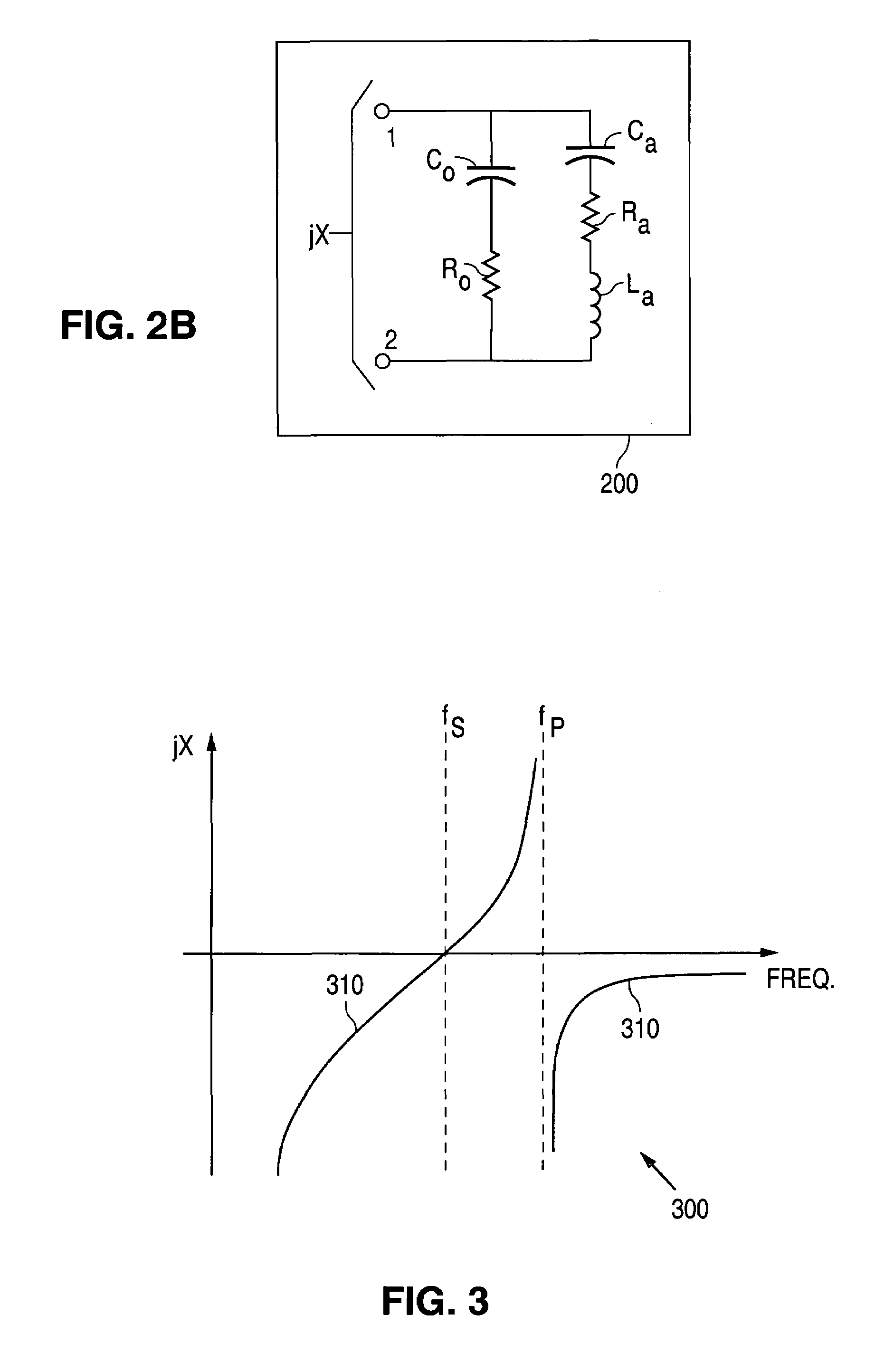Apparatus and method for extending tuning range of electro-acoustic film resonators
a technology of electro-acoustic film resonators and apparatus, which is applied in the direction of resonance circuit tuning, oscillation generators, pulse techniques, etc., can solve the problems of low tuning accuracy, low frequency response, and low frequency response response, so as to minimize parasitic reactance, parallel resonance can be increased, and series resonance can be decreased
- Summary
- Abstract
- Description
- Claims
- Application Information
AI Technical Summary
Benefits of technology
Problems solved by technology
Method used
Image
Examples
first embodiment
[0050]FIG. 4A illustrates conventional variable capacitor (varactor) tuning circuit 400 for changing the parallel resonance of film bulk acoustic-wave resonator (FBAR) 200 according to the prior art. Varactor, Cv, and its associated resistance, Rv, are shown in series with each other and form a parallel connection across the port of FBAR 200 (i.e., between Input 1 and Input 2).
[0051]FIG. 4B illustrates graph 401 of susceptance (jB) of conventional varactor tuning circuit 400 in FIG. 4A as a function of tuning frequency. Curve 410 represents the susceptance (jBFBAR) of FBAR 200. Curve 420 represents the susceptance (jBCVAR) of varactor Cv. Curve 430 represents the total susceptance (jBTotal). Even for an ideal varactor Cv that can be tuned from 0 pF to ∞ pF, the maximum tuning range of parallel resonance, fp, is from fPa to fSa (the letter “a” in the subscript means “acoustic”). The series resonance remains fixed at fSa. This range is too narrow to be of practical use for local oscil...
second embodiment
[0052]FIG. 5A illustrates conventional varactor tuning circuit 500 for changing the series resonance of thin film bulk acoustic-wave resonator (FBAR) 200 according to the prior art. Varactor, Cv, and its associated resistance, Rv, are shown in series with each other and form a series connection with Input 1 of the port of FBAR 200.
[0053]FIG. 5B illustrates graph 501 of reactance (jX) of conventional varactor tuning circuit 500 in FIG. 5A as a function of tuning frequenccy. Curve 510 represents the reactance (jXFBAR) of FBAR 200. Curve 520 represents the reactance (jXCVAR) of varactor Cv. Curve 530 represents the total reactance (jXTotal). Even for an ideal varactor Cv, that can be tuned from 0 pF to ∞ pF, the maximum tuning range of series resonance, fS, is from fSa to fPa. The parallel resonance remains fixed at fPa. Again, this range is too narrow to be of practical use for local oscillators.
[0054]FIG. 6A illustrates tuning circuit 600 for extending the parallel resonance tuning r...
third embodiment
[0056]FIG. 7A illustrates tuning circuit 700 for extending the parallel resonance tuning range of film bulk acoustic-wave resonator (FBAR) 200 using external parallel inductance, L, according to the present invention. In FIG. 7A, inductor L and its associated resistance, RL, are shown in series with each other and are connected in parallel across Input 1 and Input 2 of FBAR 200. Similarly, varactor, Cv, and its associated resistance, Rv, are shown in series with each other and are connected in parallel across Input 1 and Input 2 of FBAR 200.
PUM
 Login to View More
Login to View More Abstract
Description
Claims
Application Information
 Login to View More
Login to View More - R&D
- Intellectual Property
- Life Sciences
- Materials
- Tech Scout
- Unparalleled Data Quality
- Higher Quality Content
- 60% Fewer Hallucinations
Browse by: Latest US Patents, China's latest patents, Technical Efficacy Thesaurus, Application Domain, Technology Topic, Popular Technical Reports.
© 2025 PatSnap. All rights reserved.Legal|Privacy policy|Modern Slavery Act Transparency Statement|Sitemap|About US| Contact US: help@patsnap.com



